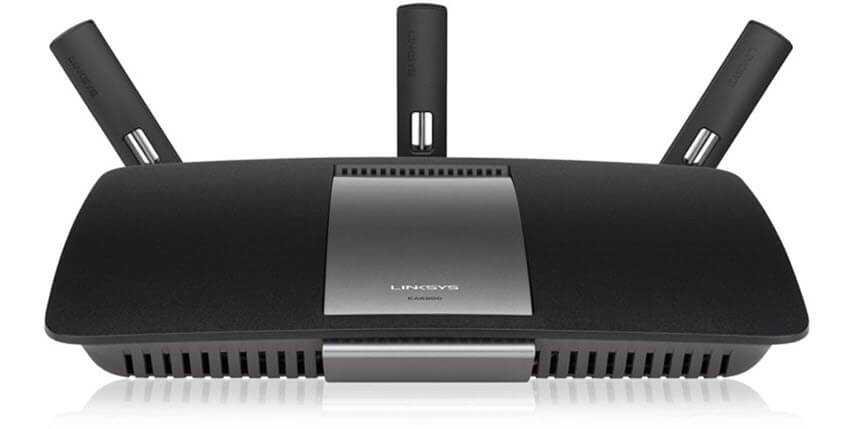Wi-Fi router and Wi-Fi: The days of using a modem to connect to the internet via phone are long gone. The wireless network it is now the de facto standard for any internet connection, since smartphones are completely rejecting wired connections.
So wherever we go we will find Wi-Fi networks. What do you know about particular networks and what do you need to know when you go to buy a Wi-Fi router for your home? Below you will find the answers you need.
What is Wi-Fi?
Η Wi-Fi Alliance announcement first launched the 1998 Wi-Fi. But it took about a decade to become a mainstream.
Despite popular belief, Wi-Fi does not mean “wireless fidelity” by wireless fidelity. It is a trademark for the specific technology based on the IEEE 802.11b standard used for wireless radio networking.
So all devices that are connected to a Wi-Fi network carry data with radio signals running through the network. Wi-Fi radio frequencies are broadcast at 2.4GHz or 5GHz. Networks in the 2.4GHz band have a maximum speed of 450Mbps, while the 5GHz networks reach 1300Mbps.
These are theoretical speeds, but they vary depending on the circumstances.
What does the Wi-Fi router do?
The Internet is channeled to your home via a complex network of underground cables. (Those who) Remember before the Wi-Fi display, the only option to connect to the internet was to use a cable. With Wi-Fi the connection coming to our house with cables begins to circulate in the air. How is this done? With a router, our well-known router.
The router is the central hub of your home network. Connects directly to your network cable or via modem. All incoming and outgoing traffic is routed through the router.
Wi-Fi radio frequencies through the router are converted into radio waves that are used to transmit and receive data from your connected devices. They often work on Linux-based operating systems. Most of them have a web page (with internal IP) to manage device settings and monitor your network activity.
Although different from each other, all routers have at least one CPU (Central Processing Unit). One or more microprocessors are responsible for running operating system commands, initialization, packet routing and network interface controls.
The routers belong to the 3 layer (layer 3) of the Open Systems Interconnection (OSI) model, Network Layer.
Each router uses one or more routing protocols. With base these protocols the router determines which server or routers are the most suitable at any given time and routes the data packets to them.
Some well-known routing protocols are:
RIP, OSPF, BGP, IS-IS
What kind of Wi-Fi router do you need?
Depending on the service provider (ISP) used, you may need to purchase some equipment. We should mention that many times the free devices that come with new internet connections and they are not the best. Almost all ISP providers in Greece currently use DSL (hopefully for fiber soon). There are routers and separate modems or devices one in two router-modems. Most modern routers have built-in modems, so you only need one device.
There are hundreds of models you can choose from. Before you choose, however, it would be good to know what features of the device are important to you. Your requirements may be different if you plan to use Wi-Fi for online gaming or your work.
You can choose from big brand names of space, paying for quality and more security. For your home network, however, you will not need Cisco devices.
Secure and optimize a Wi-Fi network
Once you have your router, you need to set up your home network. This will vary depending on the device. But common to all devices, is finding the right location for your router. The location and direction of the antennas will ensure the best possible coverage. In case of low signal, Wi-Fi power supplies can be used to boost your local network.
Your router is usually the point of entry into your home network. This should also be the first defensive firewall for your network security. Most routers have default usernames and passwords that you need to change quickly.
If your router supports it, you will need to change the default frequency to 5GHz. This will minimize interference as other devices, such as microwaves, use the frequency of 2,4 GHz.
Do you need Wi-Fi?
Our digital life has now become mobile and Wi-Fi is very popular. A wireless connection allows you to access the Internet no matter where you are. Of course, a Wi-Fi network is useful for too many other than watching movies on the bed.
With a wireless network, you can create a media server in your home, play streaming games, create networks for too many devices (printers, computers, mobiles, etc) for file sharing, and more.
_______________________________
- Password: Frequent change helps secure?
- OpenPGP SigSpoof vulnerability to popular email applications
- SUSE was sold (once again) to EQT Partners
- Wi-Fi WPA3 security template is ready





